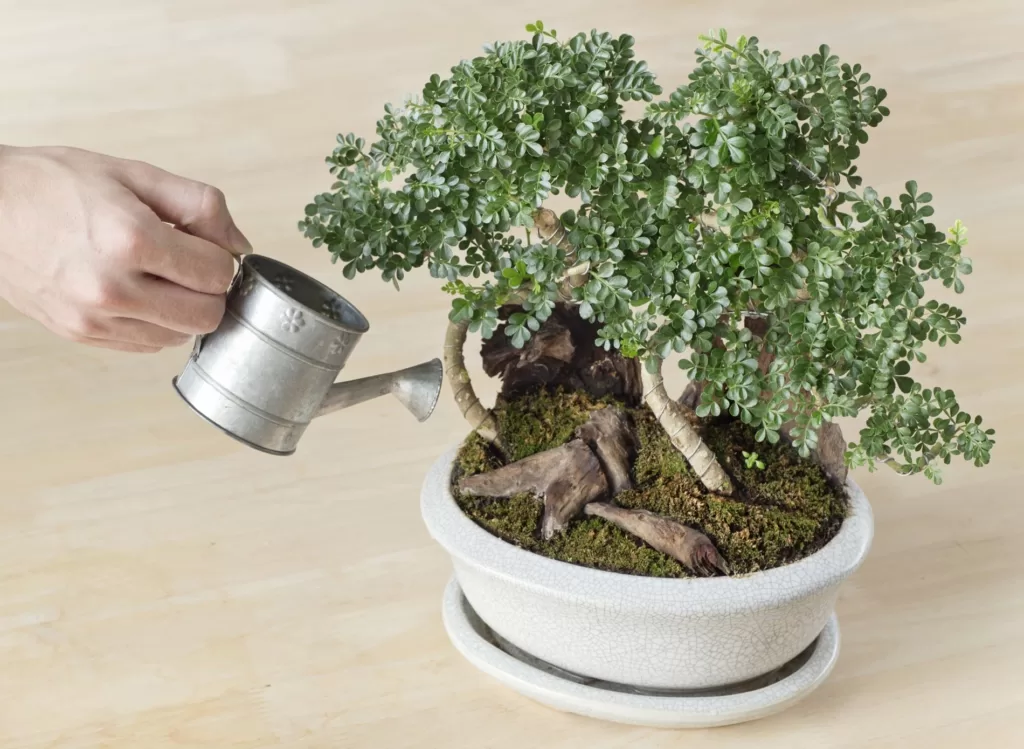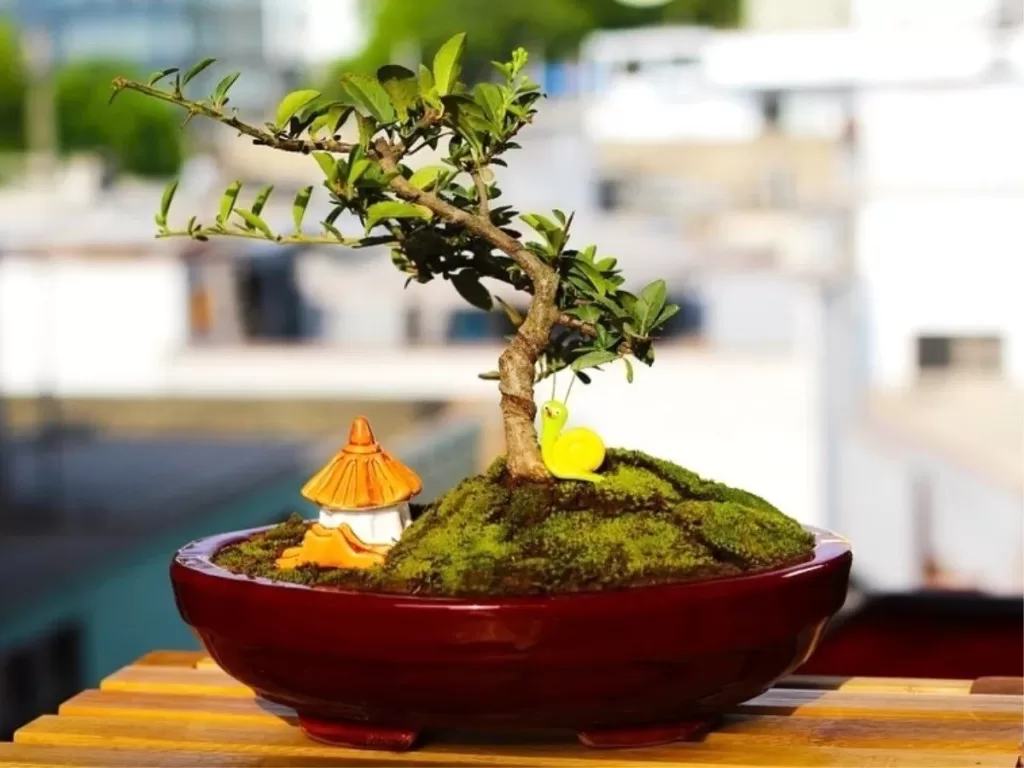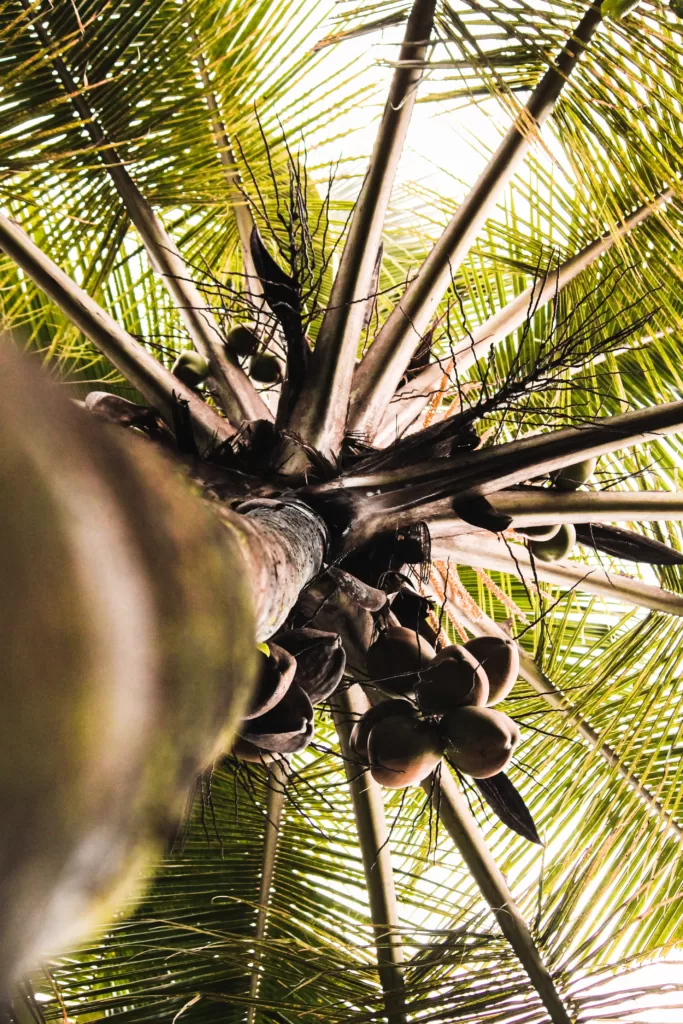Watering bonsai trees is one of the most important tasks in maintaining their health and beauty. Here is a more detailed explanation of the process – Frequency: The frequency of watering will vary depending on a number of factors, including the species of bonsai, the size of the pot, the type of soil, the climate, and the humidity levels. As a general rule, most bonsai trees need to be watered once a day or every other day during the growing season (spring and summer) and every three to four days during the dormant season (fall and winter).
Table of Contents

Checking Bonsai Soil Moisture:
To determine when your bonsai tree needs watering, you can check the moisture level in the soil by sticking your finger about 1 inch into the soil. If it feels dry, it’s time to water the tree. If it feels damp, it’s best to wait a day or two before checking again. You can also use a moisture meter to help you determine the moisture level.
Watering Method: To water your bonsai tree, use a watering can with a long spout or a hose with a fine spray nozzle. Make sure the water is at room temperature, as cold water can shock the roots. Gently drench the soil until water runs out of the bottom of the pot. It’s important to water thoroughly, so that the entire root system is saturated. Avoid getting water on the foliage, as this can encourage fungal growth.
Drainage: Good drainage is important to prevent root rot, which is a common problem in bonsai trees. Make sure there are adequate drainage holes in the bottom of the pot and that the soil is well-drained. Consider using a layer of gravel or coarse sand at the bottom of the pot to improve drainage.
Letting Soil Dry Out: Between waterings, it’s important to let the soil partially dry out. This allows the roots to get some air, which helps to prevent root rot. When the soil is too wet, it can suffocate the roots, leading to root damage and plant death.
Remember, different species of bonsai trees have different watering requirements, so it’s important to research the specific needs of your tree. With proper care, your bonsai tree should thrive for many years to come.
Bonsai trees require consistent watering, but the frequency depends on the species, pot size, soil type, and environmental conditions. As a general rule, bonsai trees should be watered when the soil begins to feel dry to the touch.
To water a bonsai tree
thoroughly soak the soil until water runs out of the bottom of the pot. Avoid letting the tree sit in water, as this can lead to root rot. In between waterings, allow the soil to dry out partially. It’s also important to check the moisture level in the soil regularly and adjust watering accordingly. Keep in mind that certain species of bonsai trees may have specific watering requirements, so it’s always a good idea to research the specific needs of your tree.

How often should i water my bonsai tree in the winter
In the winter, when the bonsai tree is in a dormant state, it will need less water compared to the growing season. During the winter months, you should water your bonsai tree every three to four days, or as needed. To determine if your tree needs water, check the soil moisture by sticking your finger about an inch into the soil. If it feels dry, it’s time to water the tree.
It’s important to not over-water your bonsai tree in the winter, as the cool and wet conditions can lead to root rot. Make sure the soil is well-drained and allow the soil to dry out partially between waterings.
Also, be mindful of the temperature and humidity levels in your area, as these can impact the water requirements of your bonsai tree. As a general guideline, in the winter, bonsai trees should be kept in a cool, but not freezing, location with low humidity.
How often to water bonsai ficus
Ficus bonsai trees are relatively forgiving, but they do require consistent watering to maintain their health. Here is a guideline for watering a ficus bonsai:
Growing Season: During the growing season (spring and summer), a ficus bonsai will need to be watered at least once a day, or every other day. The frequency will depend on a number of factors, such as the size of the pot, the type of soil, the temperature, and the humidity levels. It’s important to check the soil moisture regularly and adjust watering accordingly.
Dormant Season: In the dormant season (fall and winter), when the tree is in a resting state, you can reduce the frequency of watering. A ficus bonsai will need to be watered every three to four days, or as needed. To determine if the tree needs water, check the soil moisture by sticking your finger about an inch into the soil. If it feels dry, it’s time to water the tree.
Watering Method: To water a ficus bonsai, use a watering can with a long spout or a hose with a fine spray nozzle. Make sure the water is at room temperature, as cold water can shock the roots. Gently drench the soil until water runs out of the bottom of the pot. It’s important to water thoroughly, so that the entire root system is saturated. Avoid getting water on the foliage, as this can encourage fungal growth.
Drainage: Good drainage is important to prevent root rot, which is a common problem in bonsai trees. Make sure there are adequate drainage holes in the bottom of the pot and that the soil is well-drained. Consider using a layer of gravel or coarse sand at the bottom of the pot to improve drainage.
Letting Soil Dry Out: Between waterings, it’s important to let the soil partially dry out. This allows the roots to get some air, which helps to prevent root rot. When the soil is too wet, it can suffocate the roots, leading to root damage and plant death.
In summary, the frequency of watering a ficus bonsai will depend on various environmental factors, but as a general guideline, during the growing season, water once a day or every other day and during the dormant season, water every three to four days or as needed.

How to water a bonsai tree indoor
Watering a bonsai tree indoors is similar to watering a bonsai tree outdoors, but with a few extra considerations. Here is a step-by-step guide on how to water an indoor bonsai tree:
- Check the Soil Moisture: Before watering, stick your finger about an inch into the soil to determine the soil moisture. If the soil feels dry, it’s time to water the tree. If it feels damp, wait a few more days before checking again.
- Prepare the Water: Use room-temperature water to water your bonsai tree. Cold water can shock the roots and cause damage.
- Water Thoroughly: To water the tree, use a watering can with a long spout or a hose with a fine spray nozzle. Gently drench the soil until water runs out of the bottom of the pot. It’s important to water thoroughly, so that the entire root system is saturated.
- Avoid Over-Watering: Over-watering is a common problem for indoor bonsai trees. To prevent over-watering, make sure the soil is well-drained and let the soil partially dry out between waterings. This allows the roots to get some air, which helps to prevent root rot.
- Monitor the Humidity: Indoor bonsai trees can suffer from low humidity levels, which can impact their health. Consider using a humidity tray or a room humidifier to maintain a healthy humidity level for your bonsai tree.
- Monitor Drainage: Good drainage is important to prevent root rot. Make sure there are adequate drainage holes in the bottom of the pot and that the soil is well-drained. Consider using a layer of gravel or coarse sand at the bottom of the pot to improve drainage.
In summary, to water an indoor bonsai tree, check the soil moisture, use room-temperature water, water thoroughly, avoid over-watering, monitor the humidity, and monitor the drainage. By following these steps, you can keep your indoor bonsai tree healthy and thriving.
How often should i water my bonsai seeds
The frequency of watering bonsai seeds will depend on several factors, including the type of seed, the size of the container, the type of soil, and the temperature and humidity levels. Here are some general guidelines for watering bonsai seeds:
- Soil Moisture: To ensure the seeds receive the right amount of moisture, it’s important to keep the soil moist but not waterlogged. The soil should never dry out completely, but also should not be so wet that the seeds are drowning in water.
- Watering Method: To water bonsai seeds, use a watering can with a fine spray nozzle or a spray bottle. Avoid using a heavy stream of water, as this can disturb the seeds or wash them away. Instead, gently mist the soil surface to keep it moist.
- Covering the Container: To help maintain a consistent level of moisture, consider covering the container with plastic wrap or a lid to create a mini greenhouse. Make sure to remove the cover periodically to allow air to circulate and prevent mold growth.
- Monitoring Soil Dryness: To determine if the soil needs water, stick your finger about an inch into the soil. If the soil feels dry, it’s time to water the seeds. If it feels damp, wait a few more days before checking again.
- Seed Germination: Once the seeds have germinated and the sprouts have emerged, you can reduce the frequency of watering. Check the soil moisture regularly and water as needed to keep the soil moist, but not waterlogged.
In summary, to water bonsai seeds, keep the soil moist, use a fine spray nozzle or a spray bottle, cover the container, monitor soil dryness, and reduce the frequency of watering once the seeds have germinated. By following these steps, you can provide your bonsai seeds with the moisture they need to grow and thrive.

How often to water bonsai in summer
The frequency of watering bonsai trees during the summer will depend on several factors, including the type of bonsai, the size of the pot, the type of soil, and the temperature and humidity levels. Here are some general guidelines for watering bonsai trees in the summer:
- Check Soil Moisture: Before watering, stick your finger about an inch into the soil to determine the soil moisture. If the soil feels dry, it’s time to water the tree. If it feels damp, wait a few more days before checking again.
- Water Thoroughly: When you do water, it’s important to water thoroughly, so that the entire root system is saturated. Use a watering can with a long spout or a hose with a fine spray nozzle. Gently drench the soil until water runs out of the bottom of the pot.
- Consider the Type of Bonsai: Different types of bonsai have different water requirements. For example, deciduous bonsai trees may need more frequent watering during the summer than evergreen bonsai trees.
- Monitor the Weather: Hot and dry weather conditions can increase the frequency of watering. In contrast, cool and rainy weather conditions may reduce the frequency of watering.
- Avoid Over-Watering: Over-watering is a common problem during the summer, especially if the soil is not well-drained. To prevent over-watering, let the soil partially dry out between waterings and make sure the soil is well-drained.
- Monitor Drainage: Good drainage is important to prevent root rot. Make sure there are adequate drainage holes in the bottom of the pot and that the soil is well-drained. Consider using a layer of gravel or coarse sand at the bottom of the pot to improve drainage.
In summary, to water bonsai trees in the summer, check the soil moisture, water thoroughly, consider the type of bonsai, monitor the weather, avoid over-watering, and monitor the drainage. By following these steps, you can keep your bonsai trees healthy and hydrated during the hot summer months.
How often to water juniper bonsai
The frequency of watering a juniper bonsai will depend on several factors, including the size of the pot, the type of soil, the temperature and humidity levels, and the overall health of the tree. Here are some general guidelines for watering a juniper bonsai:
- Check the Soil Moisture: Before watering, stick your finger about an inch into the soil to determine the soil moisture. If the soil feels dry, it’s time to water the tree. If it feels damp, wait a few more days before checking again.
- Water Thoroughly: When you do water, it’s important to water thoroughly, so that the entire root system is saturated. Use a watering can with a long spout or a hose with a fine spray nozzle. Gently drench the soil until water runs out of the bottom of the pot.
- Monitor the Weather: Hot and dry weather conditions can increase the frequency of watering. In contrast, cool and rainy weather conditions may reduce the frequency of watering.
- Avoid Over-Watering: Juniper bonsai are susceptible to root rot, so it’s important to avoid over-watering. Let the soil partially dry out between waterings and make sure the soil is well-drained.
- Monitor Drainage: Good drainage is important to prevent root rot. Make sure there are adequate drainage holes in the bottom of the pot and that the soil is well-drained. Consider using a layer of gravel or coarse sand at the bottom of the pot to improve drainage.
In summary, to water a juniper bonsai, check the soil moisture, water thoroughly, monitor the weather, avoid over-watering, and monitor the drainage. By following these steps, you can keep your juniper bonsai healthy and hydrated.

How to water bonsai tree with moss
Watering a bonsai tree with moss is similar to watering other bonsai trees, but there are some key differences to keep in mind. Here are some guidelines for watering a bonsai tree with moss:
Check the Soil Moisture: Before watering, check the soil moisture by sticking your finger about an inch into the soil. If the soil feels dry, it’s time to water the tree. If it feels damp, wait a few more days before checking again.
Water Thoroughly: When you do water, it’s important to water thoroughly, so that the entire root system is saturated. Use a watering can with a long spout or a hose with a fine spray nozzle. Gently drench the soil until water runs out of the bottom of the pot.
Water the Moss: In addition to watering the soil, it’s important to water the moss as well. The moss helps to retain moisture in the soil and prevents the soil from drying out too quickly. Use a spray bottle or a fine mist to water the moss.
Avoid Over-Watering: Over-watering can lead to root rot and can damage the roots of the bonsai tree. Make sure the soil is well-drained and let the soil partially dry out between waterings.
Monitor Drainage: Good drainage is important to prevent root rot. Make sure there are adequate drainage holes in the bottom of the pot and that the soil is well-drained. Consider using a layer of gravel or coarse sand at the bottom of the pot to improve drainage.
In summary, to water a bonsai tree with moss, check the soil moisture, water thoroughly, water the moss, avoid over-watering, and monitor the drainage. By following these steps, you can keep your bonsai tree healthy and hydrated.







